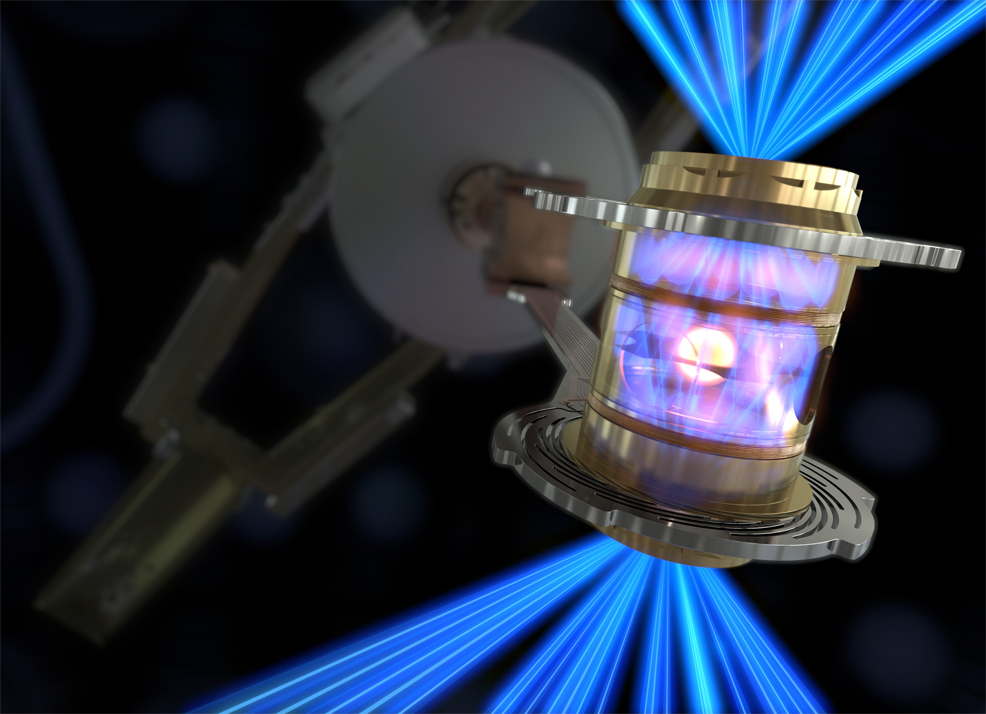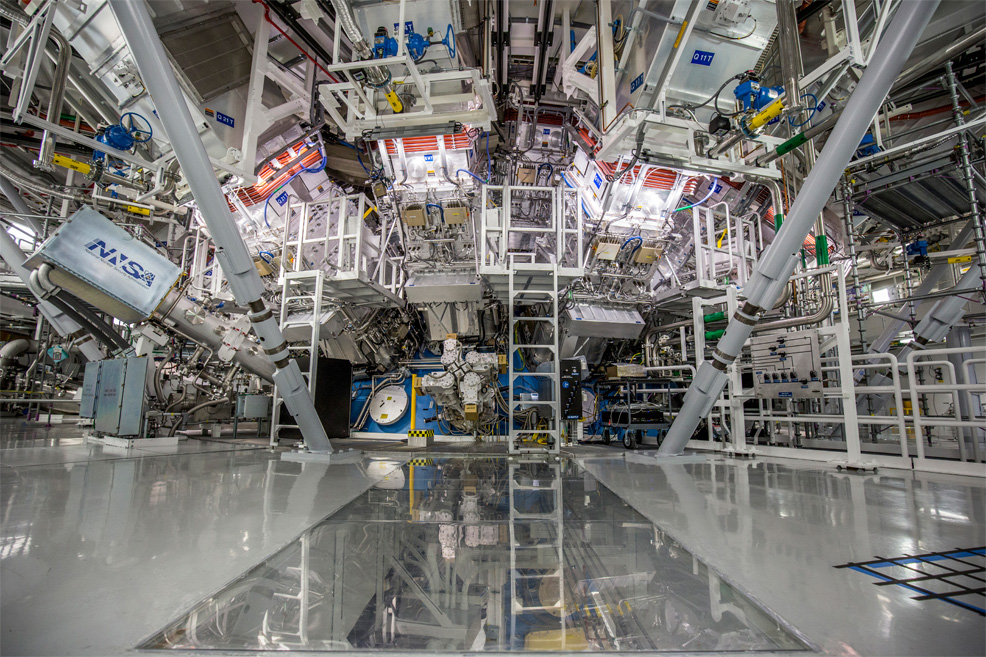
13th December 2022 Net gain in fusion energy reported In a major milestone for the field, scientists report a net energy gain in the development of fusion power.
The U.S. Department of Energy (DOE) has today confirmed the achievement of "fusion ignition" at Lawrence Livermore National Laboratory (LLNL) – a major scientific breakthrough, many decades in the making, which could pave the way to near-limitless clean power. On 5th December, a team at LLNL's National Ignition Facility (NIF) conducted the first controlled experiment in history to reach this milestone, also known as scientific energy breakeven, meaning it produced more energy from fusion than the laser energy used to drive it. This first-of-its-kind feat will provide invaluable insights into the fusion energy process, which scientists have been attempting to develop for nearly a century. Inside the target chamber of LLNL's National Ignition Facility, 192 laser beams delivered more than 2 million joules of ultraviolet energy to a tiny fuel pellet to create the fusion ignition. These lasers heated the capsule to 100,000,000°C – more than six times hotter than the Sun's core, and compressed it to more than 100 billion times the pressure of Earth's atmosphere. Under these unimaginable forces, the capsule would have imploded on itself, forcing its hydrogen atoms to fuse and release energy. The experiment surpassed the fusion threshold by delivering 2.05 megajoules (MJ) of energy to the target, resulting in 3.15 MJ of fusion energy output, demonstrating for the first time a fundamental science basis for inertial fusion energy (IFE).
The amount of energy generated in this experiment was tiny: enough to boil about 15-20 kettles. Many more advances in science and technology will be needed to supply affordable IFE to homes and businesses. However, there is now substantial momentum to drive rapid progress toward commercialisation, with various new fusion companies springing up. This latest result from the NIF will provide a major boost to the field, now that the science has been proven to work. "This is a landmark achievement for the researchers and staff at the NIF who have dedicated their careers to seeing fusion ignition become a reality, and this milestone will undoubtedly spark even more discovery," said U.S. Secretary of Energy, Jennifer Granholm. "The Biden-Harris Administration is committed to supporting our world-class scientists – like the team at the NIF – whose work will help us solve humanity's most complex and pressing problems, like providing clean power to combat climate change and maintaining a nuclear deterrent without nuclear testing." "I am thrilled that NIF – the United States' most cutting-edge nuclear research facility – has achieved fusion ignition, potentially providing for a new clean and sustainable energy source in the future. This breakthrough will ensure the safety and reliability of our nuclear stockpile, open new frontiers in science, and enable progress toward new ways to power our homes and offices in future decades," said U.S. Representative Eric Swalwell (CA-15). "I commend the scientists and researchers for their hard work and dedication that led to this monumental scientific achievement, and I will continue to push for robust funding for NIF to support advancements in fusion research." "The pursuit of fusion ignition in the laboratory is one of the most significant scientific challenges ever tackled by humanity, and achieving it is a triumph of science, engineering, and most of all, people," said LLNL Director Dr. Kim Budil. "Crossing this threshold is the vision that has driven 60 years of dedicated pursuit – a continual process of learning, building, expanding knowledge and capability, and then finding ways to overcome the new challenges that emerged. These are the problems that the U.S. national laboratories were created to solve."
Comments »
If you enjoyed this article, please consider sharing it:
|








